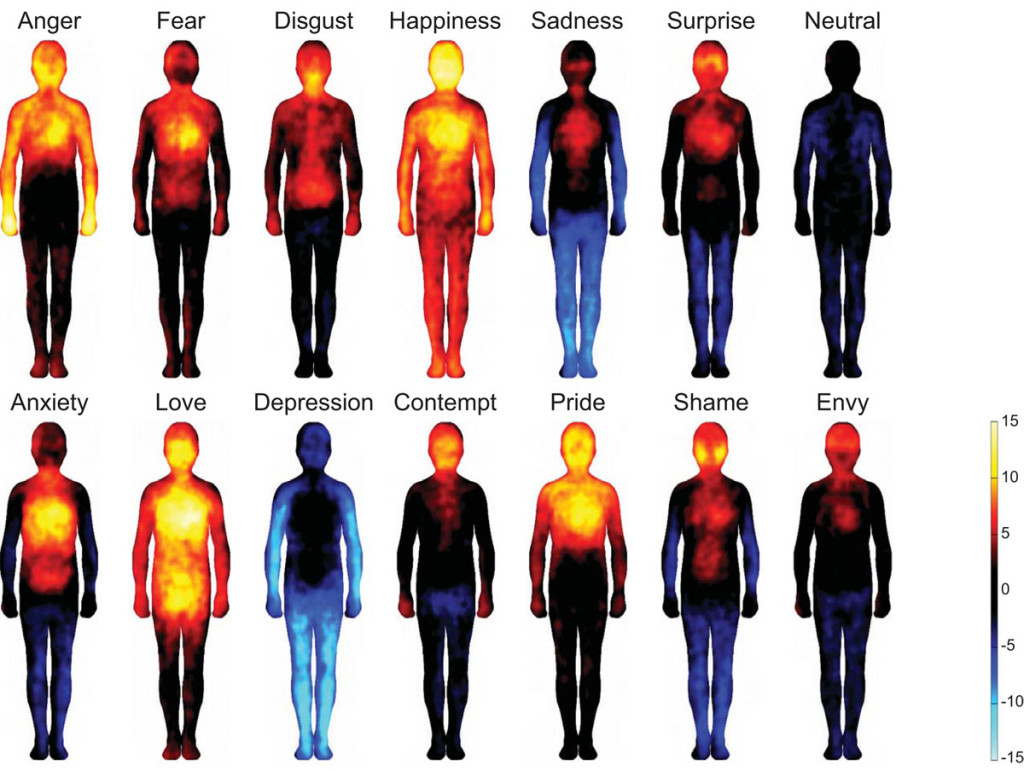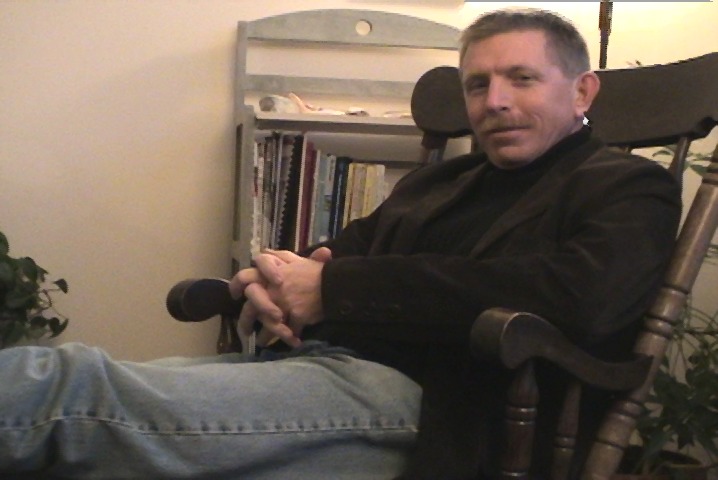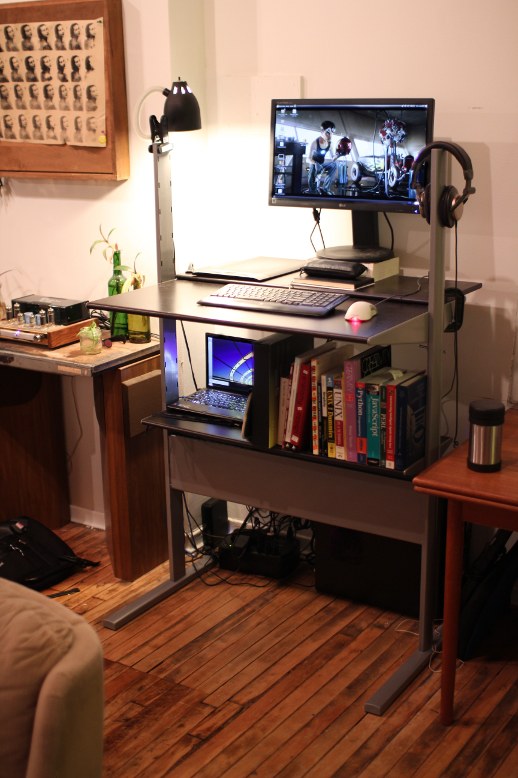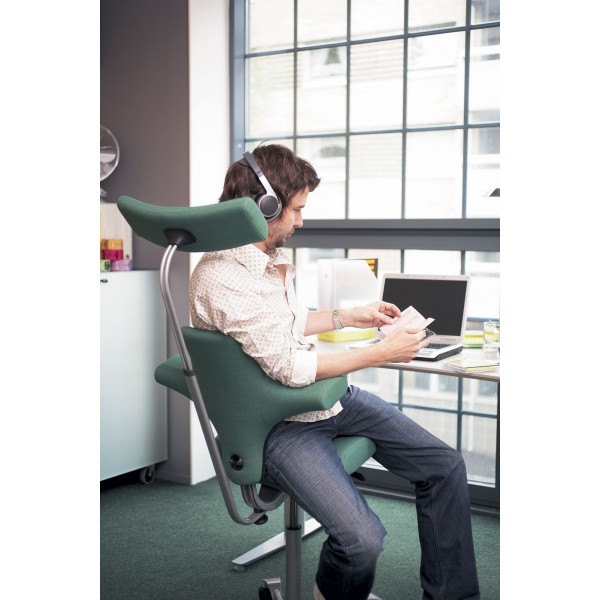I’ll let them speak for themselves.
Taghealth
The mood ring of the 20th century presented as bodily maps of emotions.
“…Participants viewed emotion-laden words, videos, facial expressions and stories. They then self-reported areas of their bodies that felt different than before they’d viewed the material. By coloring in two computer-generated silhouettes…”
Successful households have some sort of regular schedule that they follow. The most popular time for the entire family to meet up and check in on one another is at dinner time.
Bruce Feiler takes this to the next level by using Agile Development formats in his family meetings.
I met Bob over 10 years ago, during a very challenging time in my life, while I was unemployed and still studying for a new career in 3D animation. This good friend and mentor has provided me with many tools and advice that have been invaluable over the last decade. Some of the tools he referred me to include Many Lives, Many Masters, Emotional Intelligence by Daniel Goleman, and (a favourite of mine) How to Meditate: A Guide to Self-Discovery by Lawrence Leshan.
I recently came across a list with a few other points of interest that he recommended to check out. I am digitizing them here for future reference.
- Global Consiousness Project at Princeton University
- The Seven Spiritual Laws of Success by Deepok Chopera
- A Road Less Traveled (with a summary available here)
- The Secret Life of the Brain (PBS documentary series)
- Destructive Emotions: A Scientific Dialogue with the Dalai Lama by Daniel Goleman
Thanks again Bob. I hope to see you again soon.
A few months back I was shopping for a stool to perch on. “Perching” is a half sitting / half standing position that takes tons of strain off your lower neck/back and distributes some of the weight onto your legs, like a tripod. There are many reason’s not to sit around all day. Studying on my computer is a bit of a drag, especially when I go to points where I’m watching tutorial videos or doing reading research. Posture suffers greatly in these situations.
My plans to purchase a chair had fallen through and I needed a solution. I was staring at my desk for a few minutes before I realized the solution. “Hey Jeremy. You know that the chair is killing you, so why not give standing a try?” 30 minutes later I had reconfigured my desk to standing height and months later I’m still standing The photo above shows the result.
*UPDATE 2012-03-14*
Over my computer using history (20+ years) I’ve sat, leaned back, no back, too short and too tall. I’ve sat on stools that were about the height of dining tables and I’ve knelt down in contraptions that bring out my claustrophobia. I’ve even bounced around on a ball for a bit. One of my favorite chairs is the HÅG Capisco (pictured right).
In the end, I’m standing… or sometimes perching and I love it. While standing, I quickly notice when I’m leaning too far in and craning my neck/straining my eyes. My legs do get fatigued, but this acts as a constant reminder for me to shift my weight. I think it’s important to have the desk slightly lower than elbow height when standing straight. This allows your shoulders to drop (a major point of tension) and also gives you room to bend your knees. Of course, too low isn’t good either, as I this can cause issues also. Standing with locked knees does not promotemovement.
It’s easiest to just remember:
“The best posture is always the next one.” – Peter Opsvik (Norwegian industrial designer best known for his innovative and ergonomic chairs)
For a better understanding of chair ergonomics (“ergo-chair” sounds a bit like a contradiction), I highly recommend the book “The Chair“, by Galen Cranz’s. This University of California, Berkley professor also provides a bit of history, so you can understand exactly how the chair came into being. For a summary of some of the points illustrated in Galen’s book, check out What’s Wrong with the Chair.
I keep watching this and practicing, yet I can’t seem to get into that one position…
… ok, a few…
…ok barely any of these positions.
`
Or maybe the safest thing to do would be a Nauli before breakfast.
In the documentary, When the Devil Knocks, Hilary is one of 6 personalities (referred to as “alters”). As stated at the beginning, the alters were created in order to help Hilary survive by taking over in times of trauma. A unique alter was created to deal with each unique traumatic situation. For example, a young boy alter took control when it was necessary to befriend her abuser, who promised to teach her/him how to shoot a 12 gauge shotgun. A sad young girl alter was born to carry the burden of remembering and dealing with the actual events of abuse. The eldest 15 year old girl alter, Mary, came into power as a source of strength and/or control.
Though the film only showcases 5 of the alters, there were 35 that Hilary had to share her life with. Apparently there were many abusers throughout her life, which only fragmented her life even more.
 I had shown up to the theater about 8 minutes late, though they had some problems with the projector, thus forcing them to restart the film from the start (lucky me!). The only seats available were in the very front left of the theater. After the film had finished, I noticed everyone standing, turning and applauding. The film maker, Hilary, her life partner and therapist were in attendance! They set up the mic stand just in front of me (I had to move my bag so they had enough room).
I had shown up to the theater about 8 minutes late, though they had some problems with the projector, thus forcing them to restart the film from the start (lucky me!). The only seats available were in the very front left of the theater. After the film had finished, I noticed everyone standing, turning and applauding. The film maker, Hilary, her life partner and therapist were in attendance! They set up the mic stand just in front of me (I had to move my bag so they had enough room).
Many interesting questions were asked, all of which were very different from the typical Q&A I am used to hearing.
In the film, I had noticed that whenever Hilary let one of her alters take over, they would usually knock or carefully take off her glasses. During the Q&A, I had asked, “Typically we are used to seeing characters in films take off their glasses as they took on different personalities. This, we usually assume, is for dramatic effect. However, in your case, why did the different alters take off your glasses? Did each personality have it’s own prescription?.” Hilary replied, “Yes, all my personalities had different prescriptions. Some were very uncomfortable with glasses altogether, and other alters had requested specific prescriptions that were different from my own.” I had asked if they had ever done any actual in-office testing and she said that they had actually intended to, but never got around to it. This provides me with more evidence showing that the mind is a larger factor on the eyes than we realize.
I found this very interesting, as I’ve read about cases where traumatic events would cause problems for the eyes, but only at a distance that is similar to the one when the original traumatic event was experienced. For example, there was a story of a woman who witnessed the death of a loved one at 10 feet. She could see closer than 10 feet, and further than 10 feet, but she could not focus on objects at exactly 10 feet.
I would have also liked to have queried more into other physical attributes, such as back or neck pain, as a friend of mine brought these types of symptoms to my attention. For example, a message that releases physical tension also releases or reveals emotional stress.
I felt the documentary was interesting, especially in how it made me look inward on how I deal with stressful situations. Though it’s difficult to say that I understand what she went through, a small piece of me can relate to the way the mind deals with trauma.
Stopped by to visit Warren today. We went for a walk and promptly we started talking an audio book that he’s been listening to by Deepak. We also spoke of multi-vitimins and and another audio book, where the author was talking about supplements. I mentioned that I had significantly lowered my meat intake and Warren recommended (based on a few different sources, including the current audio book) that B12 would be a good supplement to look into.
I stopped by a local organic shop and picked up some B12, Folic Acid & Milk Thistle. Just got home and have been reading the wiki writeup on folic acid.
“Folate is necessary for the production and maintenance of new cells.[8] This is especially important during periods of rapid cell division and growth such as infancy and pregnancy. Folate is needed to synthesize DNA bases (most notably thymine, but also purine bases) needed for DNA replication. Thus folate deficiency hinders DNA synthesis and cell division, affecting most notably bone marrow and cancer, both of which participate in rapid cell division.”
The wiki entry goes on to describe associations found with mental health and cancer. Basically, is sounds like a good balance of folic acids in the body is certainly a good thing.
Milk Thistle is your liver’s best friend, especially against damage done by toxins. It’s a blood cleanser and also can aid the healing of sebaceous cysts.
Vitimin B12, on the other hand, is essential for,
“…the normal functioning of the brain and nervous system, and for the formation of blood. It is one of the eight B vitamins. It is normally involved in the metabolism of every cell of the body, especially affecting DNA synthesis and regulation, but also fatty acid synthesis and energy production.”
“A common synthetic form of the vitamin,cyanocobalamin, does not occur in nature, but is used in many pharmaceuticals, supplements and as food additive, due to its stability and lower cost. In the body it is converted to the physiological forms, methylcobalamin and adenosylcobalamin, leaving behind the cyanide, albeit in minimal concentration.”
Cyanide? OH MY!! Well, apparently we eat more cyanide than we realize, and in small doses, it’s harmless. Since I’m lowering the meats, it sounds like a good idea for me to start taking this supplements.
Oh, and back to Deepak. Apparently he recommends sesame seed oil. Further googling reveals that it’s apparently a good anti-fungal treatment. Huh… go figure.
So, I started learning Ceroc about 3 weeks ago. It’s basically a modification of modern jive. It’s a hell of a lot of fun and easy to learn. Not intimidating for beginners (like me). However, after three classes, I was a little concerned with the footwork. There really isn’t any. This can be good or bad, depending how you look at it. It’s good, because it’s easier and you can makeup your own style. The focus in Ceroc is the moves. Notice that I capitalized it, that’s because it’s trademarked.
Here’s a video of Ceroc in action. Note: After about $25 and two two hour lessons, you could be doing this. Again, it’s easy and fun.
Anyhow, my goal was to learn more traditional dances styles. I’ve already spent too much of my life, on the dance floor, swinging my arms around like a fool. I’ve been trying to move that dancing to lower parts of my body. That’s what brings me to the private lessons. Last week I met up at one of Vancouver’s premier dance studios for a free consultation. The consultation included 15 minutes of lessons and a little chat about why I’m doing it, what I want to get out of it, etc.
This past Wednesday was my first official 45 minute private lesson. If you have not taking dance lessons before, I cannot stress what a difference it makes to have a little one on one time with a dance instructer (keep sly comments to yourself). You focus on the core steps and you have someone there to make sure you don’t learn incorrectly. Biggest problem I had with big classes, is there’s a lot of potential to learn it wrong, and there’s one thing that’s harding than learning… and that’s unlearning. If you are unsure about certain steps, they discourage you from practicing on your own. My teacher simply said, “You’ll know when you’re ready to practice certain steps on your own.” Again, don’t want to have to spend time unlearning incorrect form.
Today was my first dance party, which was preceded by a 45 minute group lesson. They really do stick to the basics, but this really helps in getting your muscles trained for autopilot. In the group class, it was similar to the style of Ceroc classes, where you’re constantly rotating partners. Anyhow… now the dance party!
So basically all the beginner and intermediate students get together for some dancing. Shy guys like myself are put in a situation where you must ask or be asked to dance. I didn’t shake with fear and I wasn’t pouring with sweat… well, yes I was, but it was the dancing, I swear! I want to get the most out of this, so I made sure I didn’t cower in a corner somewhere. Luckily, there were plenty of teachers there to come by and pull me onto the floor. I asked two people to dance, but I could swear that one of them dozed off while I went through my basic steps. Naw, everyone was pretty cool. Didn’t take too long before I could actually put a little sway into my waltz. I tried getting a little fancy with swing, but quickly noticed myself getting a little lost in the steps when I did. Stay focused! Baby steps, Jeremy.
What basic steps did I learn? Foxtrot, waltz, cha-cha-cha, single & triple swing, ramba and tango. I’m happy to say that I didn’t step on any toes. I have some slick dance shoes that are basically black sneakers w/ dance bottoms. Love sliding around on them. Best sliding I’ve had since… well… since we used to poor bottled water on the ground to loosen up the rave goo.
Speaking of “rave”, I think one of the instructors used to “party”. We had some good talks about music and DJing. Speaking of DJing, I think I’m finally getting my gear and library shipped out to Vancouver.
But I digress.
I’m addicted. I couldn’t wipe the grin off of my face the whole night. I guess I did well, considering every one’s surprise when I said I had one lesson. Though, I’d hate to think what they expected a beginner to be like. OH… I know… I have rhythm. Yay me!
What do I really want to learn? Well, the thing I always loved about swing (other than the swinging) were the steps I saw… which I guess they call the “lindy hop”? Oh my goodness. So many different types of swing. Checkout the footwork and acrobatics.
My heart beateth.
 Entering altered states of mind. A state of clarity. This is certainly one area that Buddhism has helped my life. How to focus the mind. When you discover just how focused you can be, you realize how noisy your head has always been. I blame the excessive amounts of TV and commercials (gotta blame something, no?) But seriously, our minds are too busy. There’s too many distractions and not enough time to give our minds rest. Even sleep isn’t restful anymore. We go to sleep thinking about our day, or worrying about the day to follow. I can’t tell you how refreshing my rests are now, ever since my late night snacks became a salad, my drinks became water and my mind rested with me focused on my breath.
Entering altered states of mind. A state of clarity. This is certainly one area that Buddhism has helped my life. How to focus the mind. When you discover just how focused you can be, you realize how noisy your head has always been. I blame the excessive amounts of TV and commercials (gotta blame something, no?) But seriously, our minds are too busy. There’s too many distractions and not enough time to give our minds rest. Even sleep isn’t restful anymore. We go to sleep thinking about our day, or worrying about the day to follow. I can’t tell you how refreshing my rests are now, ever since my late night snacks became a salad, my drinks became water and my mind rested with me focused on my breath.
I highly recommend How to Meditate by Lawrence LeShan for a no B.S. summary of the practice. Thanks to Bob F. for that recommendation. Of course, the only real way to truly understand it, is to try it. One 10 minute sitting won’t cut it. If you’re looking for the Buddhist usage of meditation, then Turning the Mind Into an Ally is the book to run to. Both books are under 150 pages, but the second book is a much easier read.
Also, I mustn’t forget techno. 14 years old, laying in bed, with headphones on, entering the world of the grid. A world that would later have its doors thrown open even wider with the use of… other tools. Music prepared me. There’s something about that tribal rhythm that really balances out the mind.
The lead character artist at work told me that he doesn’t watch TV. I asked him how he spends hit time at home. He said he meditates 2-3 hours per night. Wow! Sitting in total silence, just focused on your mind. Most would consider this a waste of time, but if you met this guy, you would think otherwise. He’s always calm and collected.
At the very least, I would like to meditate about 30 minutes per night, and this would not include time the time needed for the sketchbook.
Can’t sleep. A burst of inspiration and confusion. Seeing everything I’m doing wrong. The things I’m doing wrong is that I’m NOT doing things. Not making the changes in my life that I know are healthy. For months I would dance at the bus stop, listening to my headphones. I tried to avoid areas with people, but if someone walked past me and looked at me as if I was a crack head, I smiled and kept dancing.
I warmed up whenever I could (45 min per day, average). My “workout” consisted of pushup bars. Gotta thank Slis for the heads up on these things. I again have a pullup bar & it’s not one I need to be afraid of breaking loose. It’s a custom make and is built right into the supporting 2x4s in the framework of an extra-wide hall / doorway. Meditation/quiet time/breathing practice/dancy/stretching/yogaish type stuff is key. I was somehow able to do it without music. The music was in my head… man.
© 2024 Jer's Life
Theme by Anders Noren — Up ↑



